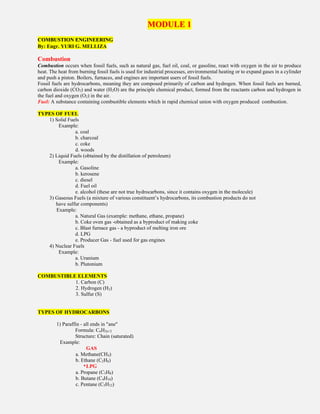Combustion involves the reaction of fossil fuels like natural gas, coal, and gasoline with oxygen to produce heat. Fossil fuels are primarily composed of carbon and hydrogen. The main products of combustion are carbon dioxide and water. There are solid, liquid, and gaseous fuels that can undergo combustion. Complete combustion fully oxidizes the combustible elements, while incomplete combustion leaves some elements unoxidized, producing soot or smoke. Air contains oxygen and nitrogen that support combustion reactions.































